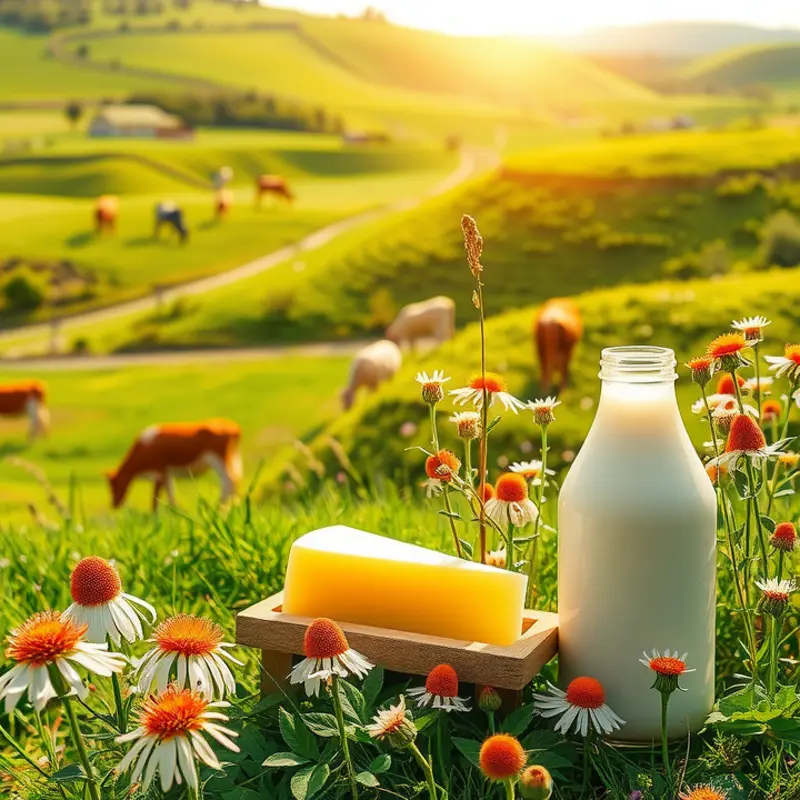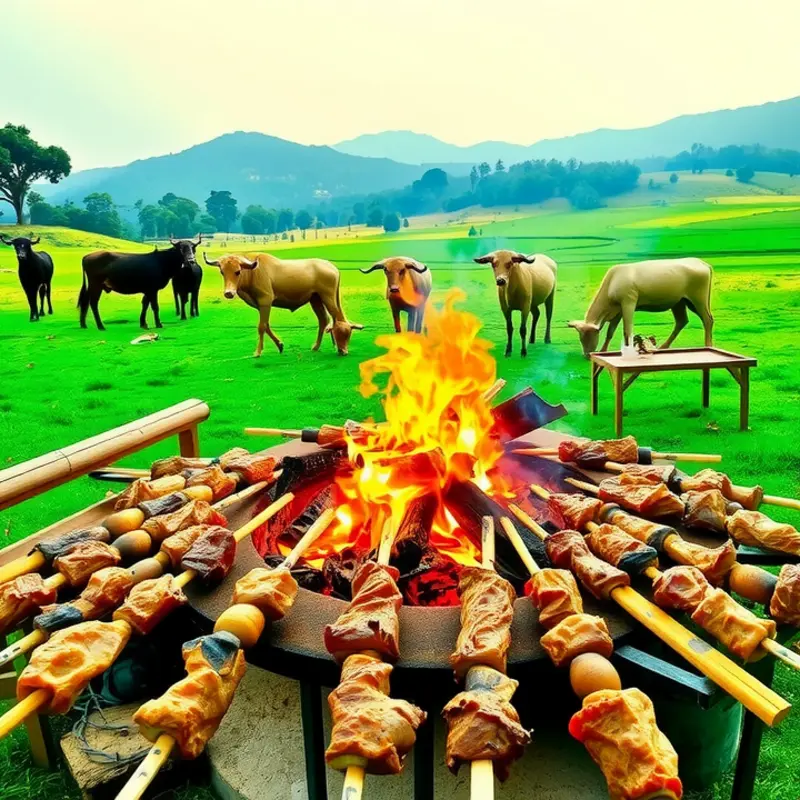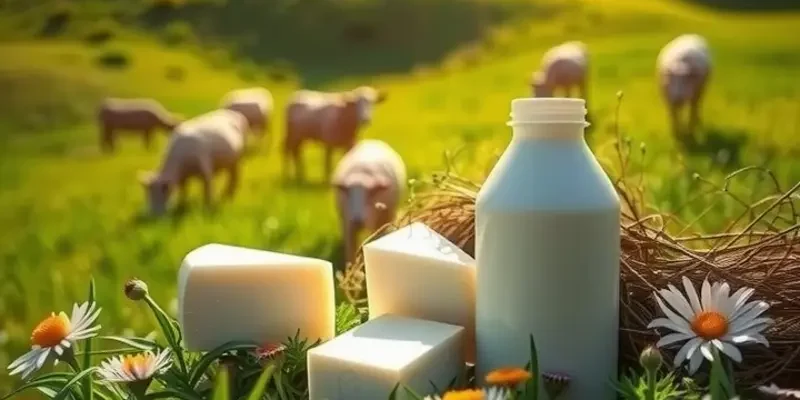Pastoral societies, thriving on the age-old traditions of animal husbandry, offer a unique glimpse into the culinary arts influenced by their environments. As food enthusiasts and culturally curious readers embark on this delightful exploration, you’ll discover how the rhythms of herding guide some of the world’s most fascinating gastronomic practices. From grasslands to mountainous terrains, the flavors reflect the deep connection between land, livestock, and the local communities that cherish them.
Sustenance from the Herd: Dairy Delights

Delving into the pastoral lands, we find that dairy products hold both nourishment and cultural richness. The transformation of milk into an array of products is an art form, perfected across centuries. Fermented mare’s milk, or koumiss, is a staple of Central Asian communities. Its tangy flavor is acquired through a fermentation process deeply rooted in tradition. This not only enriches its taste but also enhances its nutritional profile, offering probiotics similar to those found in non-dairy probiotics.
In the Mediterranean, sheep’s cheese holds a revered position. Crafted with time-honored techniques, each wheel carries the essence of the region’s landscape. The process begins with careful milking, often during predawn hours, followed by slow heating and gentle curdling. Aged to perfection, Mediterranean sheep’s cheese boasts a creamy texture and robust flavor profile.
Milking rituals in pastoral societies are a choreographed homage to their herds. In Maasai culture, cow’s milk is collected with ritualistic precision, underscoring its significance in their diet. Preservation methods also vary widely, adapting to regional climates and resources. In Nordic regions, milk may be preserved by souring, while in the Arabian Peninsula, milk is often turned into dried yogurt forms such as jameed.
The preservation techniques speak to the ingenuity of these communities in sustaining their culinary treasures through varying seasons. In colder climates, refrigeration is a challenge, prompting methods like burying perishables underground or storing them in naturally cool caves. Such practices not only prolong the life of dairy products but also infuse them with locally defined characteristics.
While investigating these diverse dairy traditions, it becomes apparent how integral they are to community identity. Shared around communal tables, dishes crafted from dairy are more than sustenance. They are narratives told through recipes passed down through generations, each carrying the whispers of green pastures and hands that milked the herds.
The ritualistic aspects of dairy production highlight the cultural values intertwined with sustainability and resourcefulness. The cheese-making process, for example, maximizes every drop of milk, with whey often used as stock for soups or in feeding livestock. Such practices reflect a deep understanding of resource cycles, a theme also explored in discussions of eco-smart kitchen storage.
Embracing these dairy delights from pastoral societies allows us to appreciate the delicate balance of nature and tradition. Each bite tells stories of fields grazed upon by the herds and the communities that cherish them. These dairy delights are not just foodstuffs; they are a celebration of life’s cyclical bounty.
Meat and Pasture: The Feast of the Herd

Pastoral societies have finely honed the culinary arts surrounding meat, a testament to their deep connection with land and livestock. The methods and rituals passed down through generations bring forth an array of dishes marked by distinct, robust flavors.
Among these methods, slow cooking has established itself as a revered technique, particularly in regions where heritage and tradition are prized. In the Middle East, where lamb is a staple, roasting becomes a ritualistic affair. The act of preparing roasted lamb over an open flame or a bed of coals draws not only on culinary skill but also on communal ties as families gather to celebrate significant milestones. The gentle, persistent heat allows the meat to become succulent, suffused with the rich aromas of spices and herbs that vary by region.
In East Africa, goat meat takes center stage in hearty stews, exemplifying the symbiotic relationship between pastoralists and their environment. Here, dishes such as nyama choma—a grilled meat delicacy—are emblematic of communal gatherings, whether to mark a harvest or other festival. The art of smoking meats imparts layers of flavor that speak of time-honored techniques adapted to the resources available in each landscape.
These communities emphasize the importance of utilizing every part of the animal, a practice rooted in respect for the life taken. The notion of wasting food is alien in these cultures, and practical knowledge of safe and sustainable food storage enhances this ethos safer storage of sauces. From using offcuts in broths to preparing sausages and preserving meat through curing and drying, the full cycle of preparation is about maintaining ecological harmony.
Festive occasions bring forth dishes that elevate the spiritual essence of these culinary traditions. In Mongolia, the nomadic tribes prepare khorkhog, a culinary marvel whereby hunks of meat are cooked with heated stones within a sealed container, capturing flavors and aromas unlike any other method. Such techniques turn gatherings into events where stories intertwine with sustenance, reinforcing communal bonds.
These immersion methods uncover deep notes within the meat, molded by the time grazed on pastoral lands. The diversity of flavor profiles across natural landscapes—steppes, deserts, and savannahs—demonstrates how closely aligned these societies remain with their environmental contexts. From the tender marbled cuts of cattle cultivated on grasslands to the gamey, aromatic flesh of goats browsing on scrub, each region’s pasture imparts its unique identity to its meat.
These culinary treasures are not just sustenance but narratives built on a history of survival, adaptation, and reverence for nature. The pastoral plate is thus a canvas where culture, flavor, and land converge, offering more than just a meal but a connected experience across the grazing lands of the world.
Final words
The culinary traditions of pastoral societies highlight the beauty and richness of life intertwined with the land and livestock. By embracing ancient techniques and flavors, these communities preserve not just their food culture but also their heritage and identity. From dairy delights to hearty meat feasts, each dish tells a story—of survival, celebration, and a deep respect for nature. As you explore these gastronomic marvels, consider how these age-old practices resonate with modern sustainable food movements, emphasizing the importance of authenticity and local resources in today’s culinary arts.








